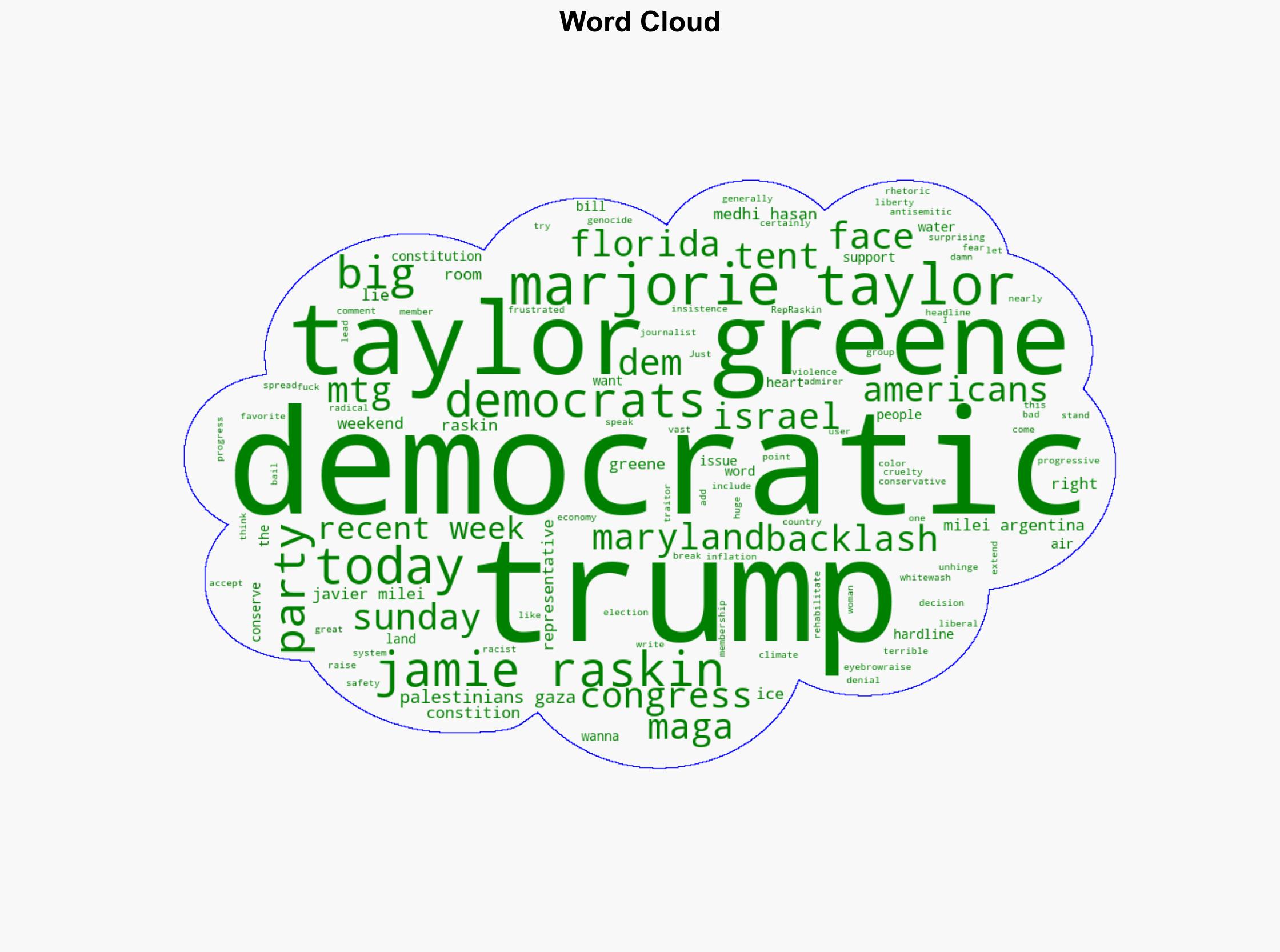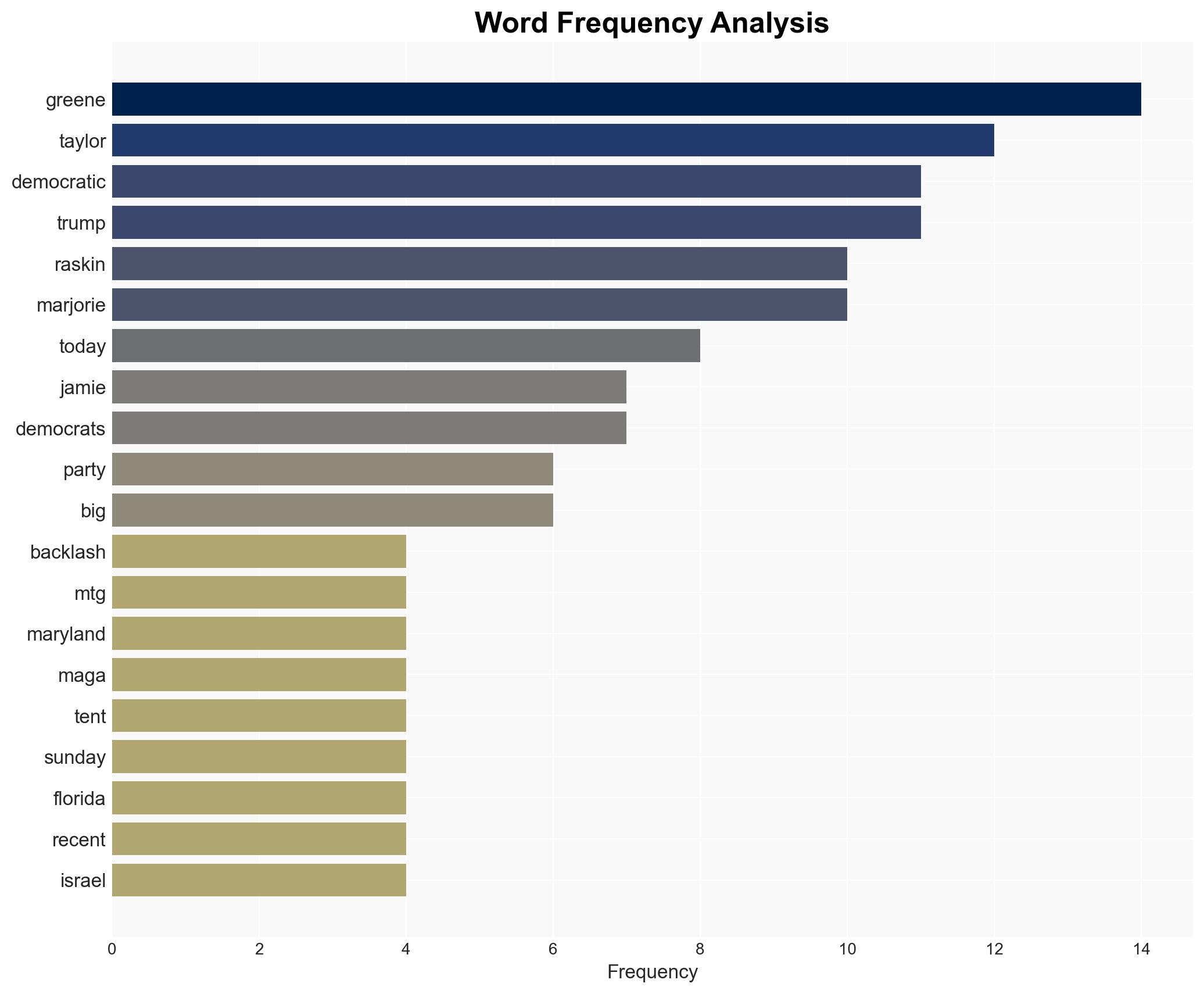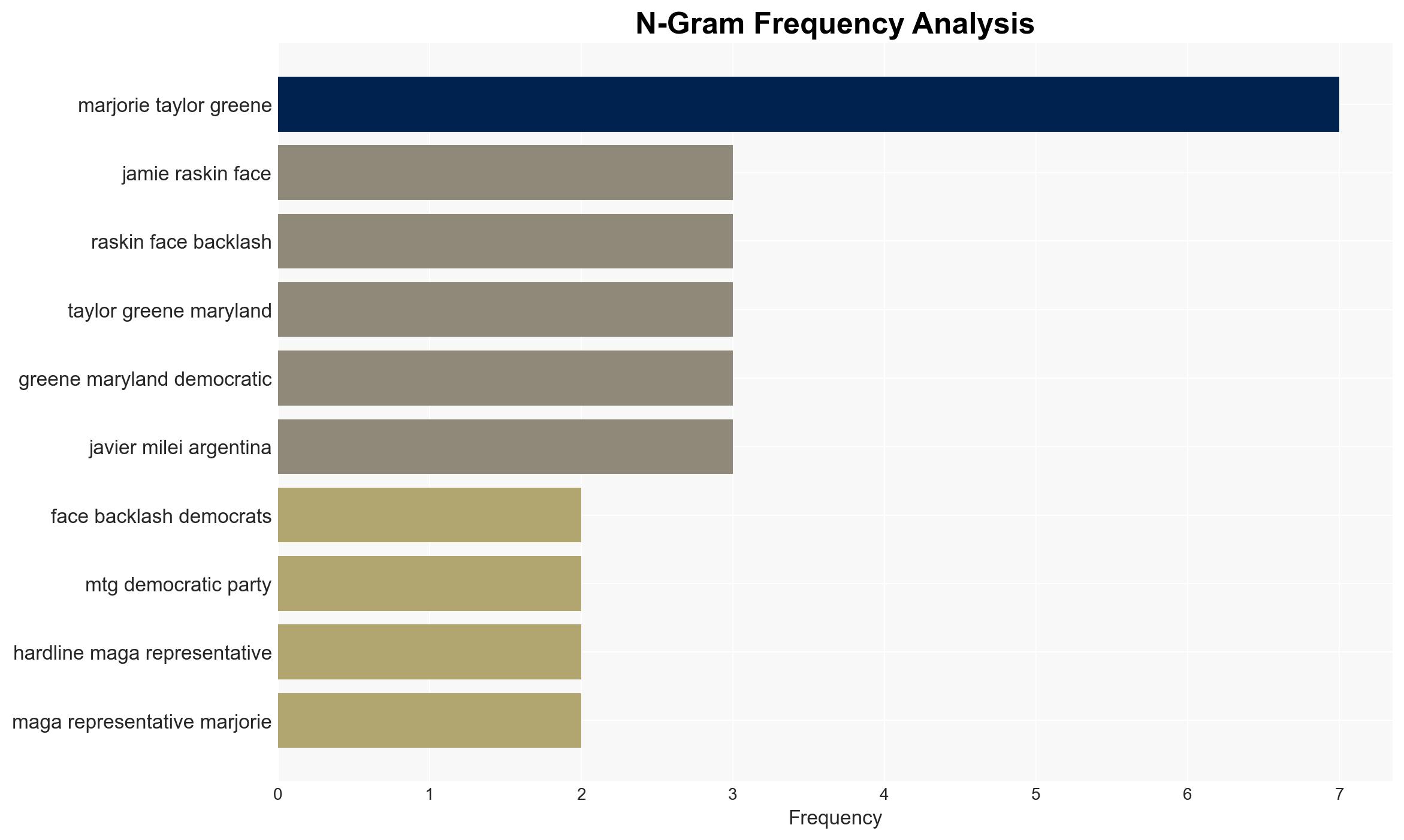Democratic Rep Faces Backlash After Saying Dems Could Accept MTG – The New Republic
Published on: 2025-11-17
AI-powered OSINT brief from verified open sources. Automated NLP signal extraction with human verification. See our Methodology and Why WorldWideWatchers.
Intelligence Report:
1. BLUF (Bottom Line Up Front)
The strategic judgment is that Representative Jamie Raskin’s comments about potentially accepting Marjorie Taylor Greene into the Democratic Party are likely a rhetorical strategy to emphasize the Democratic Party’s inclusivity rather than a genuine invitation. This hypothesis is supported by the context of his comments and the backlash from both political sides. Confidence level: Moderate. Recommended action: Monitor public and political reactions to assess any shifts in party dynamics or rhetoric.
2. Competing Hypotheses
Hypothesis 1: Raskin’s comments are a rhetorical strategy to highlight the Democratic Party’s inclusivity and contrast with Republican extremism. This is supported by the context of his speech and the emphasis on constitutional values.
Hypothesis 2: Raskin genuinely believes in a broad coalition that could include figures like Greene, aiming to appeal to moderate or disaffected Republicans. This is less supported due to the significant ideological differences and backlash from Democrats.
The first hypothesis is more likely due to the strategic context and immediate backlash, indicating a rhetorical rather than literal intent.
3. Key Assumptions and Red Flags
Assumptions: Raskin’s comments were intended for a Democratic audience and not as a direct outreach to Greene. The backlash is assumed to reflect genuine concern rather than orchestrated political maneuvering.
Red Flags: The potential for misinterpretation or manipulation of Raskin’s comments by political opponents. Greene’s recent controversial statements may be used to further polarize public opinion.
4. Implications and Strategic Risks
The primary risk is increased polarization within the Democratic Party, potentially alienating progressive members. There is also a risk of Greene using this narrative to bolster her own political position by portraying Democrats as inconsistent. Escalation could occur if this narrative is amplified in media or by political figures, leading to intensified partisan conflict.
5. Recommendations and Outlook
- Monitor public and political reactions to Raskin’s comments to assess any shifts in party dynamics or rhetoric.
- Engage in strategic communication to clarify the intent of Raskin’s comments and reinforce party values.
- Best-case scenario: The incident is quickly clarified, and the Democratic Party strengthens its narrative of inclusivity without alienating core members.
- Worst-case scenario: The narrative is co-opted by political opponents, leading to internal party divisions and external criticism.
- Most-likely scenario: The incident results in temporary backlash but does not significantly alter party dynamics.
6. Key Individuals and Entities
Jamie Raskin, Marjorie Taylor Greene, Donald Trump, Javier Milei, Medhi Hasan.
7. Thematic Tags
National Security Threats, Political Polarization, Party Dynamics, Rhetorical Strategy
Structured Analytic Techniques Applied
- Cognitive Bias Stress Test: Expose and correct potential biases in assessments through red-teaming and structured challenge.
- Bayesian Scenario Modeling: Use probabilistic forecasting for conflict trajectories or escalation likelihood.
- Network Influence Mapping: Map relationships between state and non-state actors for impact estimation.
Explore more:
National Security Threats Briefs ·
Daily Summary ·
Support us
·





